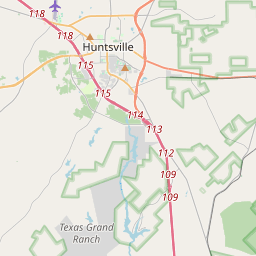State Penitentiary C.S.A. and Texas Civil War Manufacturing
Historical marker location:






Inmates, slaves, free men worked in the penitentiary textile factory, main source of cloth goods for Confederate Southwest. Here "king cotton" and wool became millions of yards of cloth and yarn, osnaburgs, uniforms for state troops, Confederate army, needy families of soldiers, cloth sales supported 300 inmates and Union prisoners of war briefly kept there. As Union blockade tightened, army requests flooded in and family cloth distribution rationed. Later financial difficulties and worn machinery caused production lag. A memorial to the Texans who served the Confederacy; erected by the State of Texas 1963
(back side.) TEXAS CIVIL WAR MANUFACTURING, 1861-65 Heavy military demands-90,000 Texas troops, a 2000 mile coastline-frontier to guard-plus reduced imports, caused a fast expansion of Texas industry. Arms and munitions plants were built, and land grants were used to encourage production. Private industry met the need and produced vital supplies for military and civilians. The Confederate quartermaster formed depots and shops for military goods. Production of salt and "king cotton" was hiked to trade for scarce items. Ladies and societies spun and sewed to outfit soldiers
April 12, 1861: The Civil War begins with the Confederate attack on Fort Sumter, located in South Carolina's Charleston Harbor.
April 15, 1861: President Abraham Lincoln issues a call for 75,000 volunteers to serve in the Union Army to suppress the rebellion.
May 24, 1861: The first major land battle, known as the First Battle of Bull Run (or First Battle of Manassas), takes place in Virginia. It ends in Confederate victory.
September 17, 1862: The Battle of Antietam in Maryland becomes the bloodiest single-day battle in American history, with heavy casualties on both sides. The Union forces, commanded by General George McClellan, manage to halt Confederate General Robert E. Lee's advance into Union territory.
January 1, 1863: President Lincoln issues the Emancipation Proclamation, declaring that all slaves in Confederate-held territories are to be set free. However, the proclamation does not immediately free all slaves in the United States.
July 1-3, 1863: The Battle of Gettysburg in Pennsylvania takes place, resulting in a significant Union victory and inflicting heavy casualties on Confederate forces. It marks a turning point in the war.
November 19, 1863: President Lincoln delivers the Gettysburg Address, emphasizing the principles of liberty, equality, and the preservation of the Union.
April 9, 1865: General Robert E. Lee surrenders to Union General Ulysses S. Grant at Appomattox Court House in Virginia, effectively ending the Civil War.
April 14, 1865: President Lincoln is assassinated by John Wilkes Booth while attending a play at Ford's Theatre in Washington, D.C.
May 10, 1865: Confederate President Jefferson Davis is captured, signaling the collapse of the Confederate government.
December 6, 1865: The Thirteenth Amendment to the United States Constitution is ratified, officially abolishing slavery throughout the country.
While this timeline provides an overview of key events, it is important to note that the Civil War spanned over four years, from 1861 to 1865, and encompassed numerous battles, campaigns, and political developments that shaped the course of American history.
As one of the most visible programs of the Texas Historical Commission (THC), historical markers commemorate diverse topics in Texas history, including: the history and architecture of houses, commercial and public buildings, religious congregations, and military sites; events that changed the course of local and state history; and individuals who have made lasting contributions to the state, community organizations, and businesses.
The Battle of San Jacinto fought on April 21, 1836, was the decisive battle of the Texas Revolution, and led to the capture of Santa Anna and the end of the conflict.
In 1836, Walker County was officially established and named after Samuel Hamilton Walker, a Texas Ranger captain who died in the Mexican-American War. The county became a hub for trade and commerce, with the town of Huntsville serving as the county seat. The early residents engaged in farming, ranching, and timber industries, which became the backbone of the local economy.
During the Civil War, Walker County played a significant role as a major supplier of food and provisions to the Confederate army. However, the county also faced its share of hardships, including raids by Union troops and the devastation caused by the war. After the war, Walker County experienced a period of reconstruction and gradual recovery.
In the late 19th and early 20th centuries, Walker County saw significant progress and development. The expansion of railroads brought new opportunities for trade and transportation, and the discovery of oil in the early 1900s further boosted the local economy. In recent decades, Walker County has continued to grow and evolve, embracing modern industries while preserving its unique heritage and natural beauty. Today, the county is known for its thriving educational institutions, correctional facilities, and vibrant community.
Walker County Timeline
This timeline provides a condensed summary of the historical journey of Walker County, Texas.
- 1836: Walker County is established
- 1846: Huntsville becomes the county seat
- 1861: Walker County residents vote for secession from the Union
- 1870: The Houston and Great Northern Railroad reaches Huntsville
- 1900: The town of New Waverly is incorporated
- 1936: Sam Houston State Teachers College is established
- 1965: The Texas Department of Corrections is established in Huntsville
- 1970: San Jacinto Mall opens in Baytown
- 1999: The City of Huntsville celebrates its 150th anniversary
- 2007: The Texas Department of Criminal Justice moves its headquarters to Huntsville